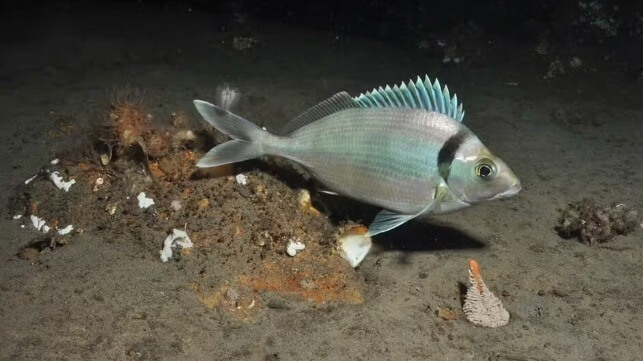Global fish stocks are far more depleted than previously thought
(By Graham Edgar)
When fish are removed from our oceans faster than they can reproduce, their population numbers decline. This overfishing disrupts marine ecosystems. It is also bad for human populations, who rely on fish as a source of protein in their diet.
In order to manage fishing areas sustainably, we need precise data on fish stocks and their future population density. Fisheries scientists use complex mathematical models for this purpose.
But a study by my colleagues and me, published today in the journal Science, raises serious doubts about the accuracy of these models.
We examined 230 fisheries around the world. We found that populations of many overfished species are in far worse condition than reported, and the sustainability of fisheries has been overstated. Urgent action is needed to ensure our oceans are not fished below their recovery capacity.
Alarming results
A sustainable fishing operation would ensure that the number of fish caught does not exceed the reproductive capacity of the fish population. In cases where an area has been overfished, stocks should be given time to recover.
To determine appropriate catch rates, computer models are used to assess fish stocks. The models are fed with data such as fish biology, catch history, and fish reproduction, growth, and mortality rates.
Our research tested how accurate fish stock estimates really are by examining data from 230 of the world’s largest fisheries, covering 128 fish species, including fisheries off Australia, New Zealand, the United States, Europe, the United Kingdom, Canada, Argentina and South Africa.
We have focused on the depletion of the “biomass” or total weight of fish stocks. When fish catches fall to less than 10% of the biomass at the start of fishing, it is generally referred to as fish stock collapse.
For each fish stock, we used data that best estimates stock decline in a given year in the past. The data were compiled by scientists and submitted to fisheries managers and databases.
We compared these historical data with updated models created years later. The updated data were the most recent assessment of this fish stock, but were also “backdated” to the same year as the historical data. The newer estimates should be more accurate because they are based on data collected over a longer period of time and after improvements in the modeling process.
So what have we found? Previous population estimates were often too optimistic about the number of fish in the sea.
For sustainably fished stocks, previous estimates were generally accurate. For overfished stocks, however, most previous data turned out to be significant overestimates. In many cases, fish stocks were assumed to be recovering when in fact they were declining.
Regarding overfished stocks, we estimate that the number of collapsed stocks is 85 percent higher than currently estimated.
How did this discrepancy arise? The models used to value inventory are complex and require many inputs. This can lead to uncertain or inaccurate results – a problem that is compounded each time a value is entered into the model.
As I explain below, the consequences can be devastating.
The case of the donkey Morwong
The jackass morwong (also known as the deep-sea bass) is found off the coast of South Australia and New Zealand. In 2009, models estimated the total stock in southeastern Australia at 4,680 tonnes – 22% of the 21,200 tonnes that existed when the fishery began. This estimate was used by fishery managers to make decisions about how many fish could be sustainably caught in future years.
But modelling from 2014 found that stocks in 2009 were probably 3,330 tonnes, and original stocks were probably around 28,800 tonnes. This means that stocks in 2009 had probably shrunk to 12% of original levels, not 22%.
The inaccurate estimates mean that the “total allowable catch” for the gentoo morwong set by the Australian Fisheries Department was probably not sustainable. Fishing continued without major restrictions and the morwong population continued to decline for a decade.
In 2022, however, the decline in fish stocks was clearly noticeable. This year, the agency announced that five marine areas would be closed to trawlers to protect the snook and other fish species. The federal government also allocated about A$24 million to buy back fishing licenses.
This could probably have been avoided if accurate inventory models had been applied and the full extent of depletion had been recognized a decade earlier.
Fundamental changes are needed
Our research shows that the global problem of overfishing is far worse than currently thought. So what should be done?
Of course, scientists should try to improve the accuracy of the models they use to estimate fish stocks.
And fisheries management needs to be much more careful to protect fish stocks worldwide. This is critical for sustainable fisheries, healthy oceans and our own food security.
Graham Edgar is a senior marine ecologist at the Institute of Marine and Antarctic Studies, University of Tasmania.
This article appears with permission from The Conversation and can be found in its original form here.

The opinions expressed herein are those of the author and not necessarily those of The Maritime Executive.

